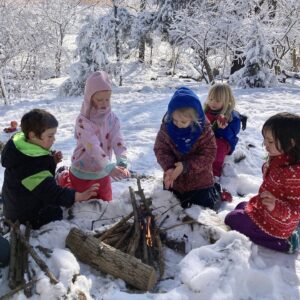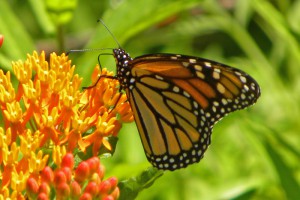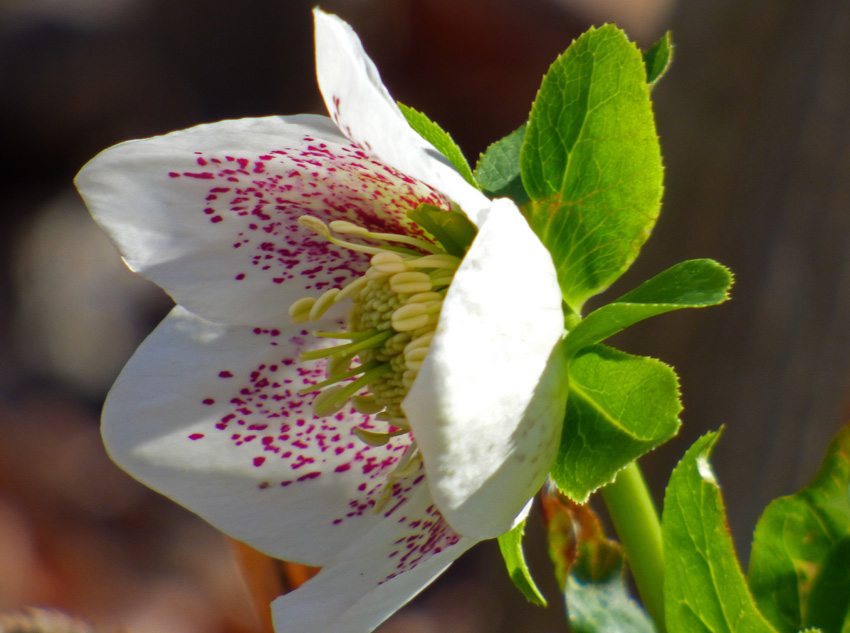 Early Spring wildflowers are a daily surprise in the Woodland Garden at the Nature Preserve. The pop up with little notice, so you have to visit as often as possible to not miss anything. With a few days of warm sunshine, everything can change. Several varieties of Hellebore are in full bloom today. These spotted ones are my favorites. Despite names such as “Christmas rose” and “Lenten rose”, hellebores are not closely related to the rose family. The genus is native to much of Europe, so they are not Kentucky natives, but we enjoy their early color in the garden. What looks like spotted petals in this one are actually sepals, which do not fall as petals would, but remain on the plant, sometimes for many months.
Early Spring wildflowers are a daily surprise in the Woodland Garden at the Nature Preserve. The pop up with little notice, so you have to visit as often as possible to not miss anything. With a few days of warm sunshine, everything can change. Several varieties of Hellebore are in full bloom today. These spotted ones are my favorites. Despite names such as “Christmas rose” and “Lenten rose”, hellebores are not closely related to the rose family. The genus is native to much of Europe, so they are not Kentucky natives, but we enjoy their early color in the garden. What looks like spotted petals in this one are actually sepals, which do not fall as petals would, but remain on the plant, sometimes for many months.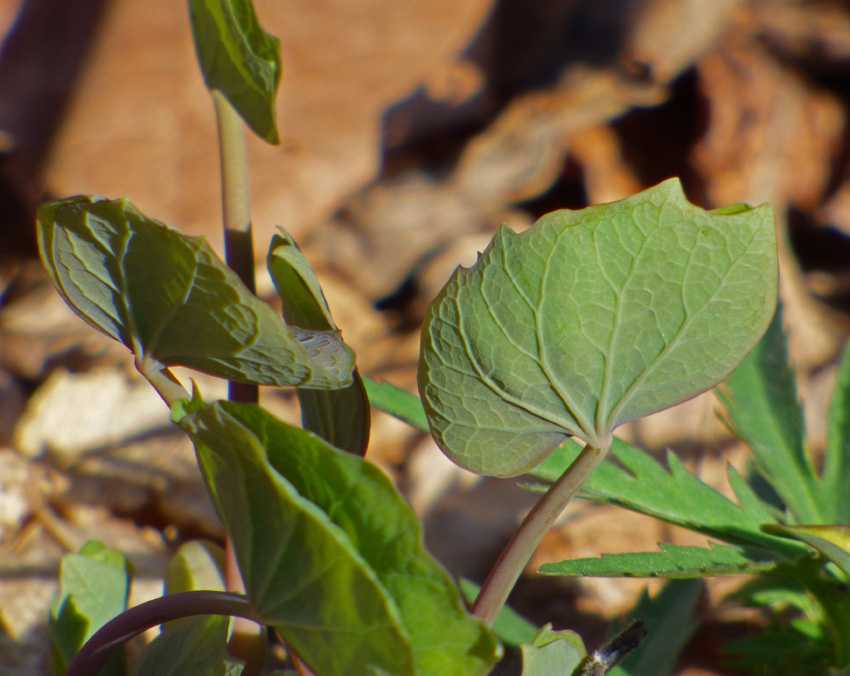 Among the Kentucky native wildflowers, Twinleaf is leading the race. When they first poke through the ground, the leaves are small and closed together, but that won’t last long. When they open, and the flowers appear, the leaves will be large and look like butterfly wings. Virginia Bluebell is up, with small purple buds that will open into blue bells in a few days. Why do so many native wildflowers start so early in the year? They are adapted to our Springs, with the chance of a cold spell. They take advantage of the sun reaching the forest floor before the leaves come out on the trees. When that happens, they don’t get enough energy to grow well. You will notice that these early bloomers will die back entirely when they are finished.
Among the Kentucky native wildflowers, Twinleaf is leading the race. When they first poke through the ground, the leaves are small and closed together, but that won’t last long. When they open, and the flowers appear, the leaves will be large and look like butterfly wings. Virginia Bluebell is up, with small purple buds that will open into blue bells in a few days. Why do so many native wildflowers start so early in the year? They are adapted to our Springs, with the chance of a cold spell. They take advantage of the sun reaching the forest floor before the leaves come out on the trees. When that happens, they don’t get enough energy to grow well. You will notice that these early bloomers will die back entirely when they are finished.
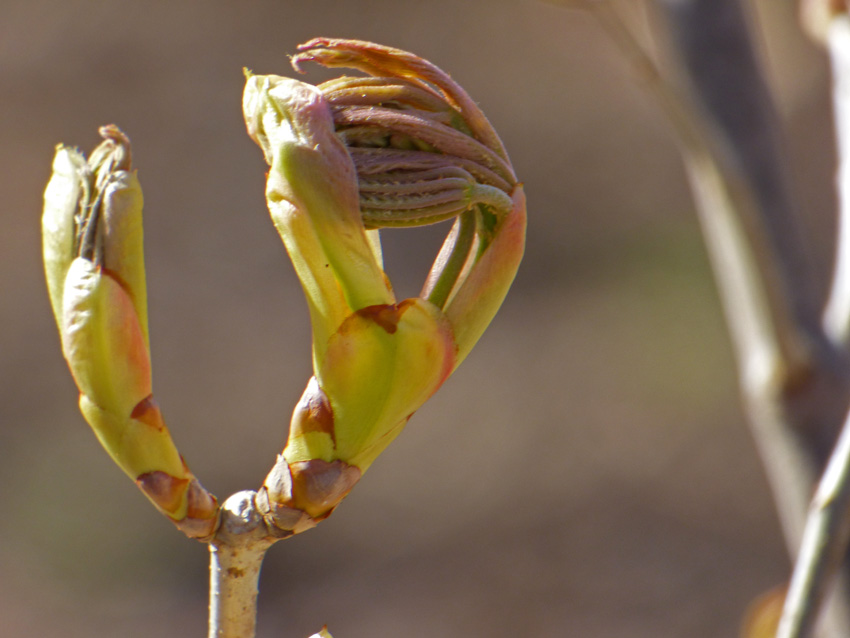 I love to watch leaves and flowers wiggling their way out of small pointed buds. This Red Buckeye tree will have big leaves, and beautiful red flowers very soon.
I love to watch leaves and flowers wiggling their way out of small pointed buds. This Red Buckeye tree will have big leaves, and beautiful red flowers very soon. You may have noticed that not all the flowers in our Woodland Garden are Kentucky natives. We plant combinations of natives and cultivars which do not grow in the wild in Kentucky. This Star Magnolia is one of the first blooming trees with large flowers. It’s cousin, the large leaf magnolia tree is, in fact, a Kentucky native tree, which blooms later in the season. That’s the wonder of the Nature Preserve – you see something different every time you walk the trails!
You may have noticed that not all the flowers in our Woodland Garden are Kentucky natives. We plant combinations of natives and cultivars which do not grow in the wild in Kentucky. This Star Magnolia is one of the first blooming trees with large flowers. It’s cousin, the large leaf magnolia tree is, in fact, a Kentucky native tree, which blooms later in the season. That’s the wonder of the Nature Preserve – you see something different every time you walk the trails!


